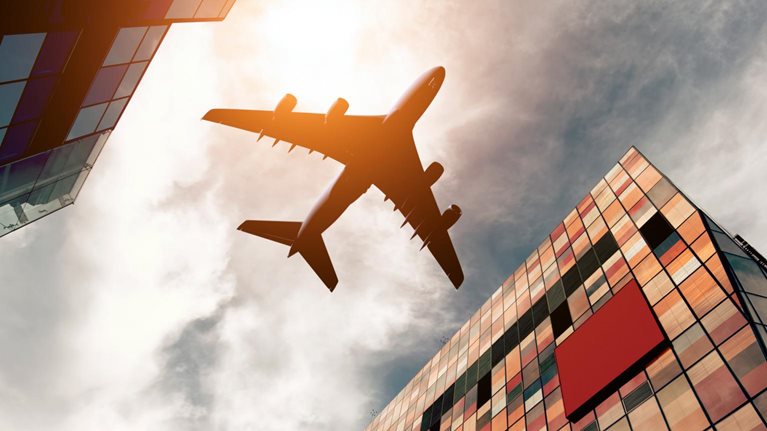Sean Doyle has spent most of his career at British Airways (BA) and was appointed CEO in October 2020 during the COVID-19 pandemic.1 Since then, Doyle has been focused on rebuilding the company to create a better BA for the airline’s colleagues and customers. Earlier this year, he announced a £7 billion transformation plan, the largest investment in modernization in its history, with more than 600 initiatives to transform the airline and revolutionize how it works across five key areas:
- providing a world-class customer experience
- achieving operational and technical excellence
- modernizing its IT estate
- improving the colleague experience
- creating a culture of sustainability that’s visible to its customers
In this interview with McKinsey’s Stephanie Hauser, Doyle describes the key initiatives. An edited version of their conversation follows.
Stephanie Hauser: You have embarked on a £7 billion, three-year transformation with more than 600 initiatives. Can you tell us more about it?
Sean Doyle: It’s a very ambitious plan that reflects the opportunities and challenges we’re facing at British Airways. We’re investing about half of the £7 billion into new aircraft. The other half is going into modernizing the airline.
We’re retrofitting our Heathrow-based long-haul aircraft with our Club Suite, the airline’s new business class seat, which includes new entertainment systems and 40 percent more storage space than our existing Club World seat. This has already created a step change in the customer experience across our long-haul fleet.
I’m also very excited about the technology transformation. We are investing in and currently beta testing a new digital platform that will improve the customer experience with everything from booking to boarding. We’re rebuilding from the bottom up with a new app and web experience.
We’re also investing about £100 million in tools that allow us to run our operation in a much more effective and sophisticated way, in congested airport environments. We’re investing in our airport facilities, such as our lounges, alongside our colleague workspaces and rest areas, as well as in tools that help our teams come to work and be their best. We’re also investing in resources and training for all our people so we can run a much better and more resilient operation.
Stephanie Hauser: Where do digital and analytics fit into your transformation strategy?
Sean Doyle: We’re excited about AI. As we modernize our data platforms, structure our data in better ways, and use advanced technologies such as machine learning, we can improve our decision making.
There are ways the whole industry can use its data more effectively. For example, a customer flying on an airline will create about 58 different touchpoints of data. There are customers on some long-haul flights for nine or ten hours, which means there are many opportunities to give customers a more personalized experience through better use of data.
We’re currently running a project to capture all of our catering data to make sure we load more of the meals we know our customers want—not what we think they want—onto our aircraft. This may sound like an obvious opportunity, but it is a very important part of the customer experience.
There are also opportunities to run our technical operations more efficiently. Through better use of analytics across data pools—not even AI—we can spot any potential issues much faster and fix them faster, which has resulted in our aircraft downtime on some of our fleet being reduced by about 40 percent.
Next, we can start to look at large language models to make operational processes easier for our colleagues to understand. Imagine an engineer taking a video or a snapshot of a fault and then getting an AI-generated library of the maintenance manual to identify and diagnose an issue very quickly. There are many opportunities we can look at and some exciting possibilities.
Stephanie Hauser: Your analytics strategy has included a big investment in people. Can you tell us more about that?
Sean Doyle: Working at an airline is very physical, and our people are our biggest asset. We have a lot of resilient people who navigate us through the good days and the bad, so investing in the things they need to do their jobs well and look after our customers is a priority. Many conversations I have with colleagues are about issues we’re not getting right for the customer. There is a symmetry between things we do to give the front line a good day in the operation, happy customers, and colleague engagement.
We also have a basic philosophy across our teams called “Share, Act, Close the Loop” to help us listen to and understand the issues that are troubling our people, find a solution, and close the loop. In addition, we’ve asked that every one of our top 50 leaders conduct a certain number of workplace visits. If they come across something that works well, they encourage people to share it. If they find a problem, they fix it, or if they can’t fix it, they explain why and what else is needed to do so.
Stephanie Hauser: Your organization is normally focused on very detailed operations and getting things right on a daily basis. How did you motivate them to embrace these longer-term changes?
Sean Doyle: A McKinsey alum once said most strategies fail because 90 percent of the people in the organization understand the rhetoric at the very top, but they don’t know what to do every day to make it happen. In 2022, we went out to our colleagues with three very simple messages.
First, every second counts—meaning we want to be a punctual airline and do everything we can to get a flight away on time. Second, our rallying call was that every colleague matters and can make a difference across the airline. And third, every customer is unique. We still use these three messages because they galvanize everybody around what’s important right now.
On top of that, we created a new internal mantra as part of our journey to transform our airline. We wanted to be “a better BA.” We were realistic about the mountain we were climbing. We had to be better before we could be great. So that clear simple messaging, combined with executing our strategy in the right direction, which takes a lot of tenacity and hard work—that’s the magic sauce.
Stephanie Hauser: Where does sustainability fit into your transformation?
Sean Doyle: We are a hard-to-abate sector, and our goal is to achieve net-zero emissions by 2050 or sooner. We’re making progress, but have more work to do, and the next phase is very challenging. Investing in new technology such as hydrogen and investing in fuel-efficient aircraft will be part of the solution. But what we need now to reduce our carbon footprint, particularly for long-haul and medium-haul travel, is sustainable aviation fuel [SAF].
We’re investing in sustainability technology ventures and have SAF partnerships in the United Kingdom and United States. Our parent company, IAG, has secured 33 percent of SAF toward its 2030 target so far, but we need better policy to allow investors to take the leap, to get plants built in the United Kingdom.
Stephanie Hauser: What is your outlook for the airline industry given some of the geopolitical, climate, and other challenges you face?
Sean Doyle: I don’t underestimate the impact of oscillating fuel prices and other current uncertainties we face, but I’ll take that compared to three years ago when we were in the height of the pandemic, running an airline at 5 percent of normal capacity at times.
With respect to long-term demand, remember there are many people all over the planet who haven’t traveled yet and many markets where aviation will boom. We have to enable efficient, sustainable travel for both those who haven’t had the privilege of enjoying flying yet and those that fly regularly, and we have to continue to connect Britain with the world and the world with Britain.

